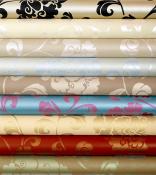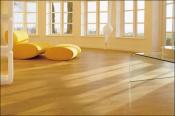Search
Login
Recommended
Wall painting in the interior of a modern apartment, art painting
When undertaking the renovation of the old or the creation of a new interior, we pay the greatest attention to wall decoration, knowingly, or on an intuitive level, understanding that it is the walls that will become its most considered part. That is why the right choice of materials for their decoration is so important. This can be textured plaster and paint, wallpaper, decorative panels made of natural or artificial materials, fabrics. Recently, art painting of walls is often used. An attractive moment is the possibility of creating a truly unique interior, in which the painted wall becomes a valuable element, worthy of attention, creating a certain mood in the room.
Content:
- Wall painting in the interior - from primitive times to the present day
- Technique for creating a picture
- How to Prevent Common Errors
- How to get started
- How to transfer an image to a wall
- Do-it-yourself wall painting in the interior - how to color the image video
- Wall painting - use a stencil video
- Vector drawings on the wall - an option for the lazy
Wall painting in the interior - from primitive times to the present day

No matter how strange it may sound, people started painting walls in their habitats (caves) long before they learned to build houses. In closer times, for example, during the Renaissance, wall painting was especially widespread, the work of famous artists Michelangelo, Raphael, Leonardo da Vinci contributed to its heyday.
A modern designer is characterized by a desire to change the meaning of space, to give it individuality, in such conditions manual work is especially appreciated.
Naturally, the work of eminent artists on the walls of their own apartment or house is a pleasure not accessible to everyone, but having drawing skills, and most importantly, the desire to decorate your house and make it cozy and unique, you can try to make a decorative painting of the walls with your own hands.

Of course, the decision to independently carry out work will require a study of the painting technique, numerous nuances that can ensure the quality of the result. You can paint in different techniques, subject themes can be very diverse. Art painting of walls is exactly the kind of decoration that will allow home owners to add variety to the interior of the room and fully express their individuality and taste.
Technique for creating a picture
There are several wall painting techniques; the classic options include:
- affresco - a type of mural that involves applying paint to wet plaster,
- a secco - murals made by applying paints to dry plaster,
- painting with tempera, oil or acrylic paints.
Artistic brushes are traditionally used to perform wall painting, the use of any technical means is unacceptable - after all, a hand-painted picture is a work of monumental painting.

Among the modern options for creating paintings on the walls should be noted:
- airbrushing, when pneumatic devices are used for applying paints - airbrushes,
- painting on textured plasters, which allows to obtain relief images,
- painting using fluorescent, pearlescent, light-accumulating paints,
- grisaille - paintings imitating convex sculptural textures; all kinds of shades of gray are used to create them,
- graffiti - paintings in this case are created using paints from aerosol cans.

How to Prevent Common Errors
Before you begin to work, you need to study what errors are most common when performing decorative wall painting. Firstly, one should not forget that the drawing chosen for drawing on the wall will be in front of the eyes for a long time. If the room is intended solely for relaxation, then a marine theme, an image of the cozy streets of the old city, green spaces may turn out to be a very suitable option.

For a room equipped in hi-tech style or a teenager’s room, a cosmic landscape or fantasy-style painting may turn out to be a relevant topic. For a children's room, a colorful picture with a fairy tale plot is ideal. A well-thought-out plot will help to zone the space of the nursery, it can decorate not only the walls, but also the ceiling.
We must not forget that, depending on the subject and quality, the result of painting can become an interior decoration or make it unsuitable for use as a living.
How to get started

Choosing the right place

A very important point is the choice of place to place the painting - it will attract maximum attention:
- it can be assigned the function of allocating space,
- it will successfully fulfill the role of masking any flaw allowed during the design, in which case the painting should be lightweight, unobtrusive.
It will be necessary to decide what painting should emit - comfort and warmth, or vice versa, to introduce dynamics and energy into the interior.
Decide on the image
Choosing a topic, you will need to find a picture suitable for copying, it can be an illustration from a book, postcard, picture from the Internet. You should not immediately take a complex multifaceted drawing, artists who already have experience can afford this.

For starters, you can take some beautiful abstract drawing or a simple plot with a tree branch, for example. Starting with abstract images is easier - mistakenly drawn lines will not lead to a change in meaning or to a deterioration of the picture.
Choose paints and brushes
Experts recommend using matte acrylic paints for wall painting - they are easy to mix with each other and with a background shade, a positive point is that the acrylic paints applied to the surface of the walls do not fade and do not wear out. You can clarify how many colors you need from a sales assistant, he will also tell you what shades to give preference to, what materials you can mix with each other and how to do it right.

Specialists involved in art painting recommend adding white when mixing paints - this will help reduce the saturation of the resulting shades. You can draw a picture of wildlife by getting a variety of shades from mixing green, yellow and brown colors.
It is worth recalling one of the important features of acrylic paints - with the help of them you can create a transparent picture, similar to watercolor, or vice versa, saturated, which is obtained when using gouache. If the wall painting is done in gouache, you will need to apply several layers of acrylic varnish to the dried drawing - otherwise the painting will quickly deteriorate - the gouache is not resistant to mechanical stress, it will be printed on clothes or hands at the slightest touch.
You can use a variety of brushes, artificial ones turn out to be more convenient in practice, if the drawing has a floral theme, then you can use foam brushes, their cost is low, but you can draw a petal with just one touch of the wall surface.

The width of the purchased brushes should be different - using wide brushes it will be possible to quickly create wide lines, small ones will be needed to sketch and fine-tune fine lines.
Saving on brushes does not make sense - a professional tool makes it easy to get clear and neat lines, while cheap brushes paint like a broom.
Preparatory work

Before you begin to apply the drawing, it is recommended to smooth the surface of the walls, cover them with a layer of putty, primer and paint with white paint, or apply a paint of a different shade that will serve as the background for the image. However, sometimes they resort to wall painting precisely for the reason that the walls are uneven and it is not difficult to hide such a defect by painting.
How to transfer an image to a wall
Professionals recommend not to refuse to perform a sketch. To transfer the selected image, it is easiest to divide the picture into a small cell size, on the wall, draw the same number of cells, proportionally increasing their size. The transfer of the picture will also require a proportional increase in each of its details. Do not make the cells on the wall large - the smaller their size, the easier it will be to copy the picture. For drawing a drawing, you should use a simple pencil - erroneously drawn lines can be corrected or deleted if necessary.

When performing the sketch, it is recommended to periodically move away from the wall as far as possible and check whether the work is being performed in a quality manner - it is difficult to notice distortions and other shortcomings in the vicinity. After the drawing is completely transferred, the auxiliary cell lines can be removed.
To transfer the picture to the wall, you can also use another technique - a sketch of the life-size fragments of the picture is made on the sheets of paper, then the sheets are alternately applied to the wall, the contours of the picture are pressed and outlined.

You can also use the slide projector to transfer the image.
Do-it-yourself wall painting in the interior - how to color the image
When preparing paints for painting, you will need to create new shades on your own, get them by mixing existing paints, adding a small amount of water and white paint. It is important that the consistency of the paint in this case corresponds to the density of non-greasy sour cream - too diluted paint will drain, thick - will not give a smooth surface when applied.

Begin work by painting large monophonic fragments of the picture. You can apply paint using a roller or brush. Then with the help of thin brushes mark the border between different shades of paint and apply small details.
You can learn more about how to properly transfer a picture and colorize it by watching the video
After completion of the work and drying of the paint, the surface of the resulting painting can be covered with a layer of varnish. It is advisable to use a front, matte varnish. But for acrylic paints, this procedure is not mandatory. Often, beautiful fragments of stones, multi-colored glass, shells are additionally used to decorate painted walls.
Performing the work, one should think about the bright and the positive - because with the help of painting our positive energy is produced in the outside world.
Wall painting - use a stencil

For those who are too critical of their artistic talents, but want to make an original home decoration with their own hands, the most acceptable option would be to use a stencil. You can order its production in any advertising company.

Stencils are made from Orakal film, the stencil can be used several times - until the adhesive on the wrong side of the material loses its stickiness. You can apply paint on the stencil with a sponge, this greatly simplifies and speeds up the process of decorating the wall.
Vector drawings on the wall - an option for the lazy

You can give the wall a more decorative look with the help of stickers popular in European countries. Of course, it’s not at all interesting to buy replicated finished parts - you can cut them yourself from the same Orakal decorative film, or order production in a design studio. Such work is not expensive.

It is quite easy to achieve brightness and expressiveness of the image; a film of more than a hundred different shades is on sale.
The use of modern technologies and various technical devices greatly simplified the work of the artist and reduced the time to complete the work. If, while working with brushes, painting a wall 5x5 m in size required several months of painstaking work, today such work can be completed in a week. The timing of the work is influenced by the complexity of the chosen plot, the performance of the artist, the availability of free time and the desire to quickly enjoy the result of his work.





